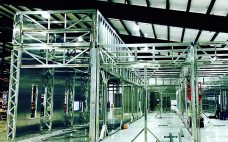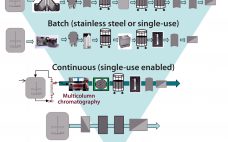Biomanufacturers seeking the best approach to rapid implementation of flexible manufacturing capacity take into account the benefits presented by different modular construction options. We analyzed different approaches to building manufacturing capacity and assessed the economic benefits of each approach. Our evaluation was based on biopharmaceutical products for which there is an immediate unmet need, such as treatments or vaccinations for COVID-19. Such products also might entail a sudden increase in demand (e.g., expansion of a product indication or sales ramp…
Author Archives: Andrew Sinclair
Cost Analysis of Cell Therapy Manufacture: Autologous Cell Therapies, Part 2
In part 2, we continue to analyze manufacturing costs of an autologous cell therapy. A typical process involves the expansion and activation of cells derived from a single patient, which is currently very labor-intensive. To date, there is little published information on overall production costs (1). In part 1, we used a software modeling platform to identify opportunities for potential cost savings. We developed a baseline model of a cell therapy manufacturing process using the production of autologous dendritic cells…
Cost Analysis of Cell Therapy Manufacture: Autologous Cell Therapies, Part 1
Cell therapies are a growing area of interest for the treatment of a number of indications such as neurological, cardiovascular, and ophthalmological maladies that are refractory to other more conventional drug therapies. A number of cell-based therapy products currently are undergoing clinical trials. The most common target is oncology, which represents 46% of all cell-based therapies through the use of traditional blood-cell and immune-cell–based therapies. For treatment of various cancers, immune cells, lymphocytes (natural killer cells, T cells, and B…
Standardized Economic Cost Modeling for Next-Generation MAb Production
Historically, in generating material for clinical testing during antibody process development, emphasis was placed on efficacy, product quality, regulatory compliance, and speed. As the biopharmaceutical industry has matured (and with increasing competition), emphasis has shifted toward cost optimization and manufacturability. Reducing the costs of medicines for patients and payers (thereby broadening access to drugs) is now a key driver during development of new therapies as well as modernizing processes for existing molecules. Cost reduction includes providing robust manufacturing processes that…
A Sustainable, Single-Use Facility for Monoclonal Antibody Production
Pierre Fabre, the second largest independent pharmaceutical group in France, recently opened a new facility to expand its monoclonal antibody (MAb) production for clinical supply. The Antibody Biotechnology Unit (ABU) facility was designed to provide needed flexibility for adapting to various process and capacity changes, so it includes state-of-the-art single-use technologies. The facility was also built with sustainability in mind to minimize the company’s environmental footprint. The company integrated this plant into an existing antibody research and development (R&D) center,…
Inactivated Poliovirus Vaccine Made in Modular Facilities with Single-Use Technology
If current efforts to eradicate polioviruses worldwide are successful, then the oral poliovirus vaccine (OPV) currently used for routine immunization in low- and middle-income countries (LMICs) will be replaced by inactivated poliovirus vaccine (IPV). IPV will become the only option for such countries if they want to continue to vaccinate against polio (1). Because IPV is currently considered to be too expensive for use in LMICs, strategies are being undertaken to make IPV more affordable (2). Some experts estimate that…
A Framework for Process Knowledge Management
Process development and manufacturing for biopharmaceuticals are often disjointed activities. Disconnects between groups within an organization can be aggravated by a lack of common terminology and poor data-management practices. Implementing a simple data model based on the ISA-88 standard for batch control can help companies capture process and facility data throughout their product life cycle (1). The first half of this two-part article illustrates how translating a process description to a structured electronic format could transform the bioprocessing…
Monoclonal Antibody Manufacturing
Continuing the theme of this occasional series, we examine the role of manufacturing in the supply chain in terms of what is required to deliver affordable medicines to patients. The industry has debated the relevance of manufacturing costs in the overall big picture (1). Rising manufacturing costs as a proportion of the overall selling price coupled with increased competitive pressures creates a strong drive to reduce manufacturing costs. However, cost of goods (CoG) is not the only strategic…
Modeling Bioprocess Cost
At every stage of biopharmaceutical development, efficient and cost-effective protein production is critically important to maintaining the economic viability of both a product and the company developing it. Biopharmaceuticals have significantly evolved through recent protein engineering advances, resulting in highly complex, novel proteins dominating the development pipeline. Such proteins are by definition very difficult to express in a soluble and active form. The success of these products depends on accessing a platform that rapidly produces high-quality, properly folded,…
Influence of Process Development Decisions on Manufacturing Costs
As we have discussed, cost has not always featured highly during bioprocess development, in which traditionally the focus was on product quality, regulatory compliance, and speed to generate material for the clinic (1). As the industry matures in commercializing successful products, increasing competition (both from competing products and biosimilars) leads to issues of cost and manufacturability coming to the fore. Solutions adopted will depend on each organization: At one extreme are small biotech companies developing novel therapeutic proteins;…




